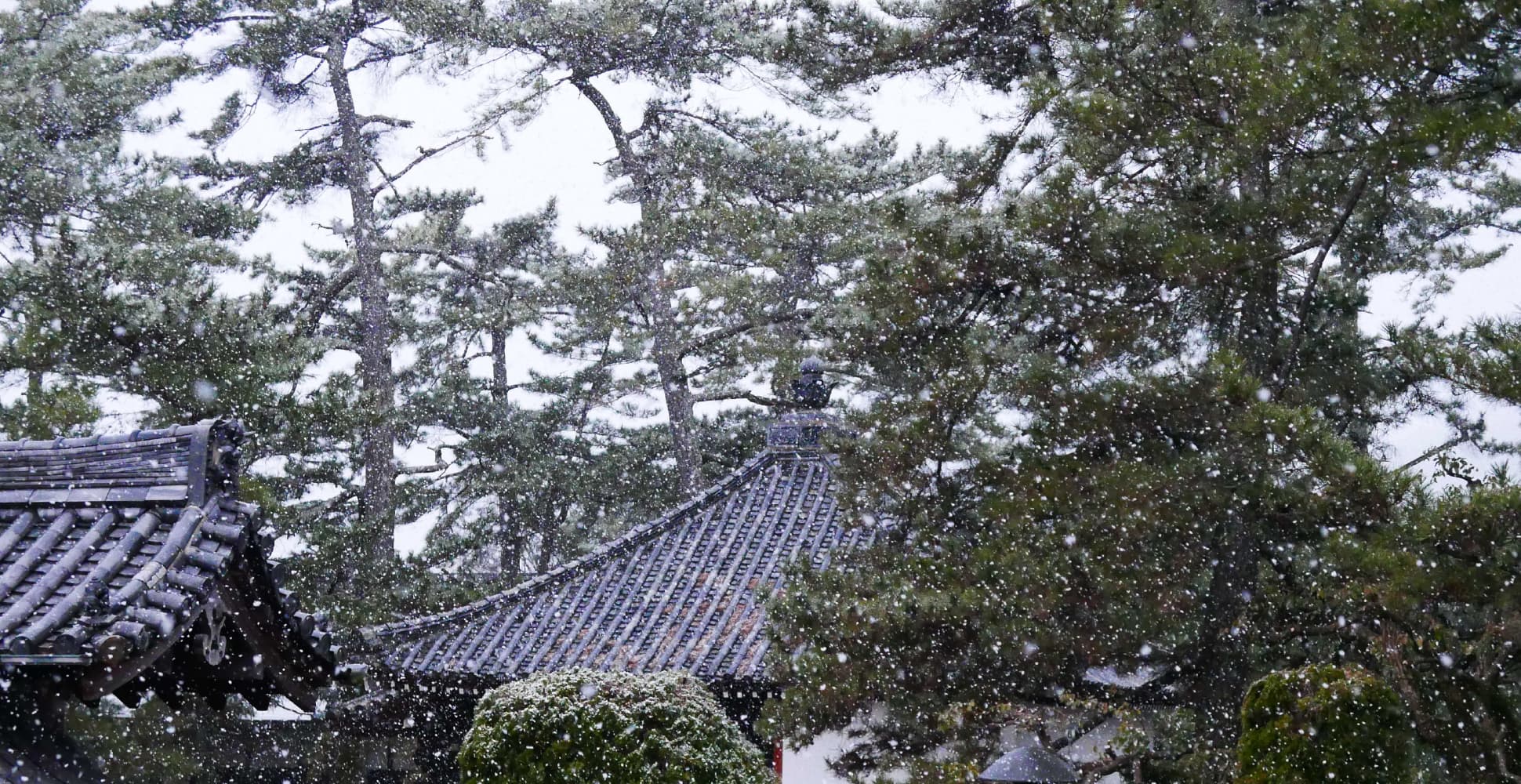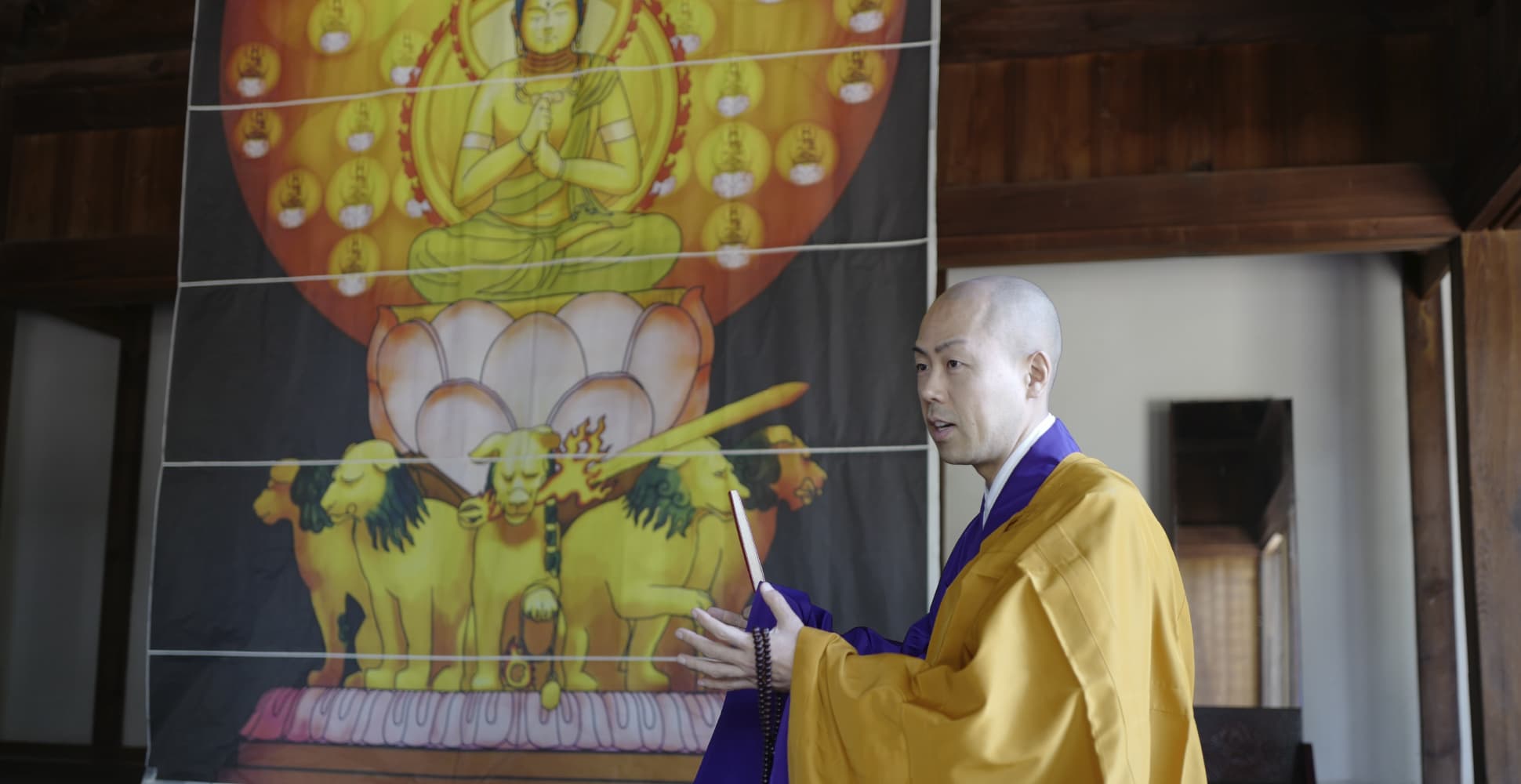


Exhibition Period: Oct. 11 – Nov. 30, 2025 (Saturdays, Sundays & Holidays) | Hours: 9:00–12:00 / 13:00–16:00 | ※On the opening day (Oct. 11), viewing starts at 10:00 after the ceremony.
Exhibition Period: Oct. 11 – Nov. 30, 2025 (Saturdays, Sundays & Holidays)
Hours: 9:00–12:00 / 13:00–16:00
Hours: 9:00–12:00 / 13:00–16:00
Introduction
THE FIRST BUTSUZO
Kūkai, the great master of Shingon Buddhism, left these words:
“The esoteric truth is too deep to be conveyed in writing.
Therefore, we reveal it through images, so that even the unawakened may understand.”
THE FIRST BUTSUZO brings this unique method of Shingon into the present.
This statue is not only art. It is a visual embodiment of esoteric teachings—a form that transcends words and speaks directly to the heart, shining light for those who suffer in life.
“The esoteric truth is too deep to be conveyed in writing.
Therefore, we reveal it through images, so that even the unawakened may understand.”
THE FIRST BUTSUZO brings this unique method of Shingon into the present.
This statue is not only art. It is a visual embodiment of esoteric teachings—a form that transcends words and speaks directly to the heart, shining light for those who suffer in life.
Concept
The Seven Meanings of “THE FIRST”
The Seven Meanings of
“THE FIRST”
“THE FIRST”
-
01
 Visual FirstTruth is shown first through form, before words.
Visual FirstTruth is shown first through form, before words. -
02
 Encounter FirstFor many visitors, especially from abroad, this is their first real encounter with a Japanese Buddha statue.
Encounter FirstFor many visitors, especially from abroad, this is their first real encounter with a Japanese Buddha statue. -
03
 Origin FirstReviving Kūkai’s original vision, lost 500 years ago.
Origin FirstReviving Kūkai’s original vision, lost 500 years ago. -
04
 Ultimate FirstThe pinnacle of 2,500 years of Buddhist art.
Ultimate FirstThe pinnacle of 2,500 years of Buddhist art. -
05
 Unique FirstA one-of-a-kind Buddha statue—found nowhere else in the world.
Unique FirstA one-of-a-kind Buddha statue—found nowhere else in the world. -
06
 Future FirstA new step forward: tradition renewed for the future.
Future FirstA new step forward: tradition renewed for the future. -
07
 Experience FirstA once-in-a-lifetime encounter beyond words.
Experience FirstA once-in-a-lifetime encounter beyond words.
Highlights
-
 01
01Eight Lions Supporting the Lotus Throne
Symbolizing the Eight Great Wisdom Kings, placed beneath the lotus seat. Each lion embodies a different divine power. -
 02
02Halo with 37 Deities
The halo features a complete three-dimensional realization of the Thirty-Seven Deities of the Diamond Realm Mandala—something seen nowhere else in the world. -
 03
03Five Buddhas of the Womb Realm on the Crown
The crown bears five Buddhas in a cross formation, faithfully based on the mandala tradition, but rarely realized in sculpture. -
 04
04Shining Glass Parts
Pink glass is used throughout the lotus seat and halo, symbolizing the union of the Womb and Diamond Mandalas. The radiance creates a unique and sacred atmosphere. -
 05
05A New Worship Space
The hall interior, designed by leading contemporary architects, is not a reproduction of the past but a modern sacred space—itself a great work of art.
Story

The Origin
A Father and Daughter
In the winter after the Great East Japan Earthquake, a couple visited Sanuki Kokubunji with their daughter, who was severely disabled and lying on a stretcher-like wheelchair.
Seeing the father’s deep sorrow, I asked myself: Am I truly offering the salvation they seek?
That question became the seed of my vow—to bring back Kūkai’s lost vision of the Great Dainichi Nyorai.
Seeing the father’s deep sorrow, I asked myself: Am I truly offering the salvation they seek?
That question became the seed of my vow—to bring back Kūkai’s lost vision of the Great Dainichi Nyorai.

The Vow
Reinterpreting Kūkai
I studied ancient documents and, with my training as a Shingon priest, reinterpreted Kūkai’s concept.
Not as a “replica,” but as a new vision enriched by later developments of esoteric thought.
For over ten years I directed every step of its creation, driven by one belief: to deliver hope and salvation to people.
Not as a “replica,” but as a new vision enriched by later developments of esoteric thought.
For over ten years I directed every step of its creation, driven by one belief: to deliver hope and salvation to people.

The Creation
Over Ten Years
Based on my original design, I gave thousands of instructions for every detail—from the lions, to the halo, to the colors.
The statue was realized entirely through donations from thousands of supporters, including nationwide crowdfunding.
This work is both a religious and cultural project of the highest public value.
The statue was realized entirely through donations from thousands of supporters, including nationwide crowdfunding.
This work is both a religious and cultural project of the highest public value.
The Message
Through this statue, I wish to share one message:
Visitor Information
|
Dates & Times
|
Oct. 11 – Nov. 30, 2025 (Saturdays, Sundays & Holidays)
9:00–12:00 / 13:00–16:00 ※ Opening day (Oct. 11) starts at 10:00. |
|---|---|
|
Venue
|
Sanuki Kokubunji – Great Dainichi Nyorai Hall
|
|
Admission
|
General: 1,000 yen
High school & under: 500 yen Donors: Free ※ Admission fees support the reconstruction of Ususama Myōō Hall (temple toilet facilities).
※ A commemorative pin badge will be given to all paid visitors. ※ Disabled visitors and one caregiver are admitted free. ※ Children under 10 are not permitted inside to maintain a quiet atmosphere. 
|
|
Access
|
Sanuki Kokubunji, Temple No.80 of the Shikoku Pilgrimage
2065 Kokubunji-cho, Takamatsu, Kagawa, Japan Tel: +81-87-874-0033 Parking:
20 parking spaces at main gate (free) 20 bus spaces available 5 min walk from JR Kokubu Station
10 min by car from Takamatsu Nishi / Fuchu Lake IC 25 min by car from Takamatsu Airport ※Temporary parking available |
FAQ
When is the first public opening?
The statue will be open to the public starting Saturday, October 11, 2025, for a limited period.
Can people with disabilities visit?
Yes. Visitors with disabilities who require assistance, as well as one caregiver, may enter free of charge.
Are small children allowed inside the hall?
To preserve a quiet and sacred atmosphere, children under 10 years old are not permitted inside the hall.
What is the admission fee for students?
Admission for high school students and younger is 500 yen.
Is viewing possible on weekdays?
Yes. The front of the hall is made of large anti-reflective glass, so visitors can view the statue freely from outside on weekdays at no cost.
Is there parking available?
Yes. There is a parking lot in front of the main gate, and an additional temporary parking area on the east side.
Is the site wheelchair accessible?
The temple grounds are fully barrier-free, so wheelchair users are welcome.
However, please note that there is a step to enter the hall. For safety, wheelchair users are advised to view the statue from outside through the glass.
However, please note that there is a step to enter the hall. For safety, wheelchair users are advised to view the statue from outside through the glass.
When are the busiest days?
The period immediately after the opening is expected to be crowded. We kindly ask visitors to consider coming on different days.
Please note that priority for hall entry is given to donors with invitation tickets, as we must fulfill our promise to those who supported the project. General visitors may be admitted inside the hall only if space allows.
Please note that priority for hall entry is given to donors with invitation tickets, as we must fulfill our promise to those who supported the project. General visitors may be admitted inside the hall only if space allows.
Open
Close


